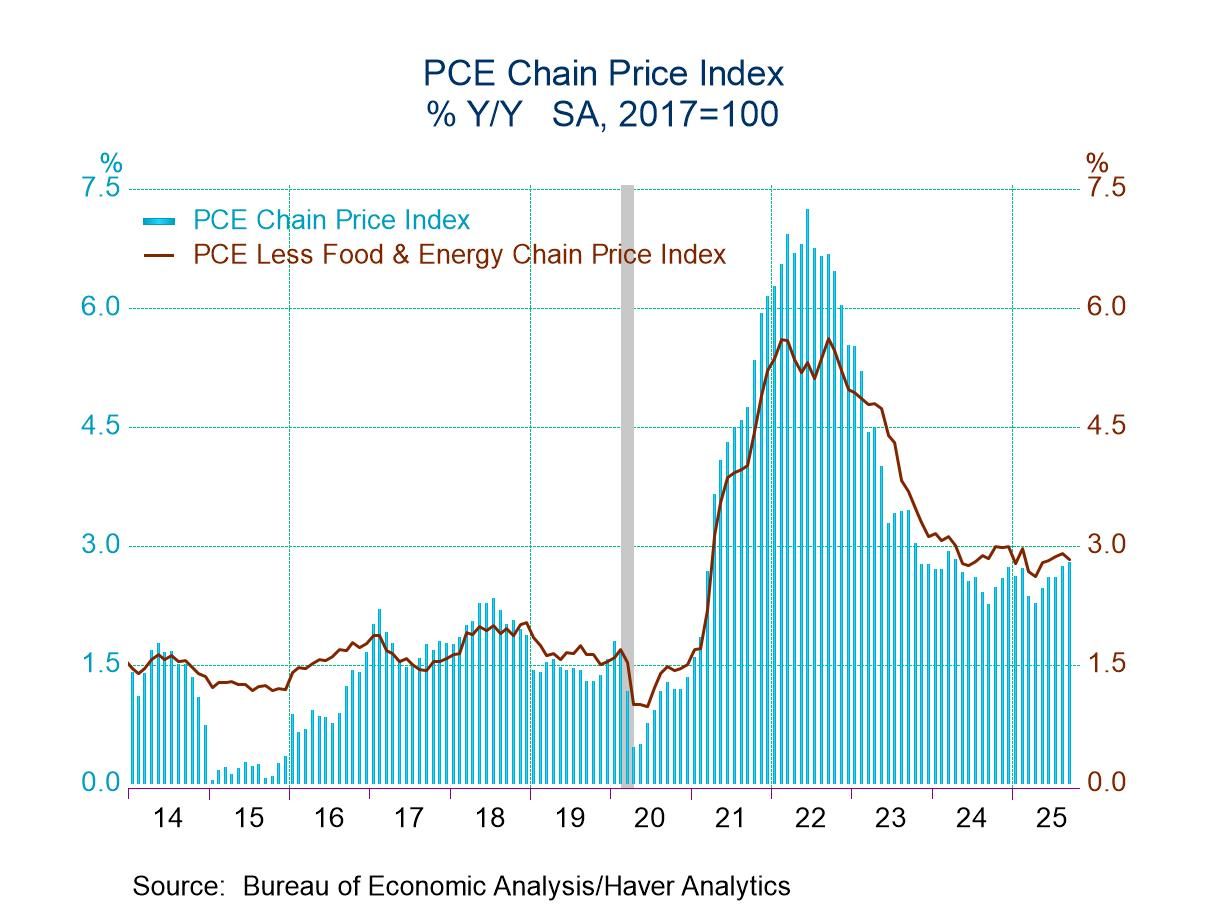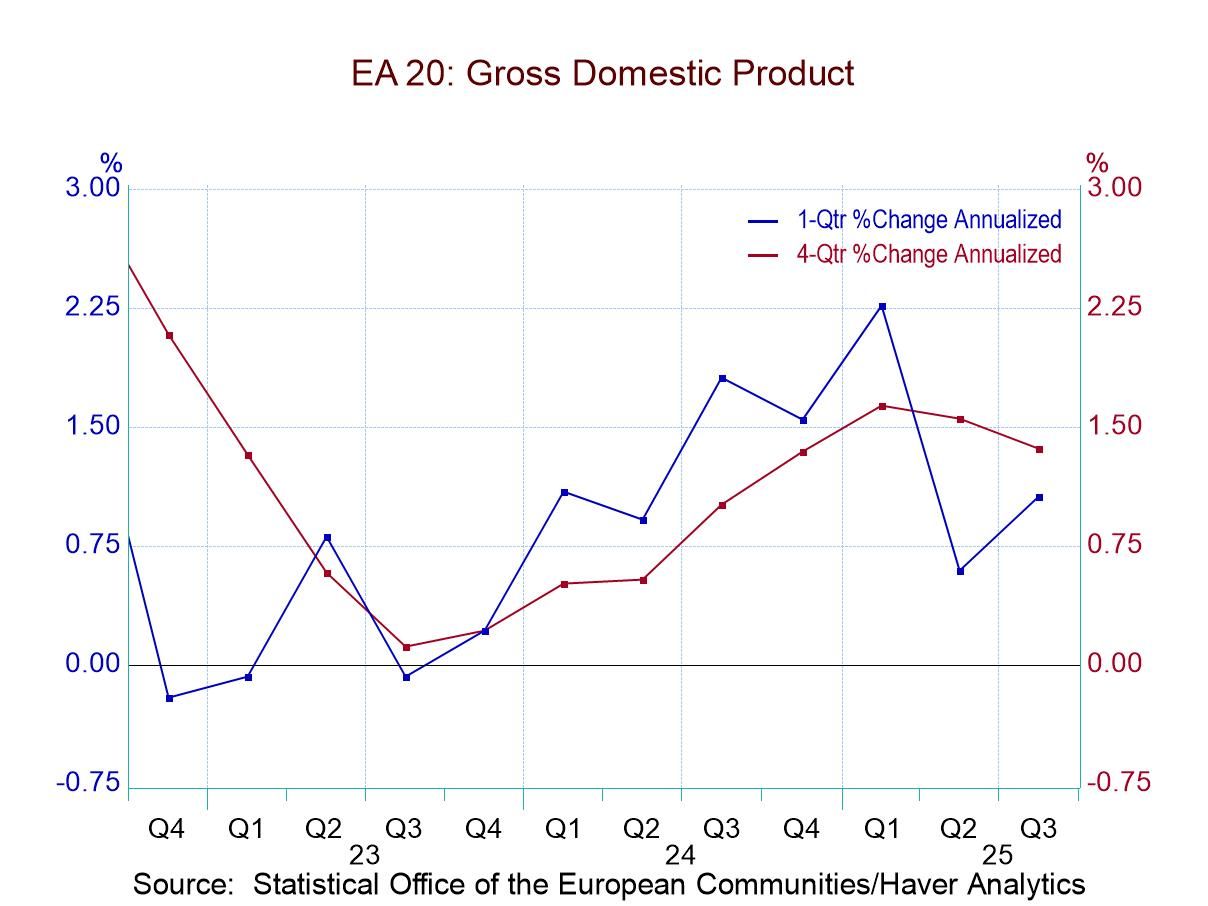U.S. Jobs Growth & Earnings Improve in April; Unemployment Rate Falls
by:Tom Moeller
|in:Economy in Brief
Summary
- Payroll gain in April follows shaved estimates in prior two months.
- Earnings growth accelerates.
- Jobless rate falls and remains near 50-year low.


Nonfarm payrolls increased 253,000 last month (2.6% y/y) after rising 165,000 in March and 248,000 in February, revised from 236,000 and 326,000, respectively. Expectations had been for a 180,000 rise in the Action Economics Forecast Survey.
Average hourly earnings gained 0.5% in April following three months of 0.3% increase. A 0.3% April rise had been expected. The y/y earnings increase edged up to 4.4% from 4.3%, but remained down from a high of 5.9% y/y in March 2022.
The unemployment rate, measured in the household survey, fell to 3.4% in April from 3.5% in March. Expectations had been for 3.6%. Household employment rose 139,000 after rising 577,000 in March. The labor force fell 43,000 following a 480,00 increase. The overall unemployment rate, including workers who were marginally attached & working part-time for economic reasons, slipped to 6.6% and has been trending sideways for seven months.
In the establishment survey, private-sector employment rose 230,000 in April (2.6% y/y) after a 123,000 March increase. Factory sector jobs improved 11,000 (1.7% y/y) after falling 8,000 during March. Construction sector employment rose 15,000 (2.7% y/y) after falling 11,000 in March.
Private service-producing sector employment increased 197,000 in April (2.7% y/y) after improving 140,000 in March. Increases varied greatly amongst service sector categories. Education & health care jobs rose 77,000 (4.2 % y/y). Leisure & hospitality employment rose 31,000 (5.6% y/y). Financial employment surged 23,000 (0.9% y/y). Professional & business services employment rose 43,000 (2.1% y/y) including a 23,300 decline (-4.9 y/y) in temporary help employment. Trade, transportation & utilities hiring improved 17,000 (1.0% y/y). Information sector hiring rose 1,000 (1.2% y/y).
Government sector payrolls rose 23,000 last month (2.2% y/y) after increasing 42,000 in March. Local government jobs increased 17,000 (2.2% y/y). State government employment improved 3,000 (2.6% y/y) and federal government payrolls rose 3,000 (1.4% y/y) in April.
Private-sector average hourly earnings rose 0.5% in April, the largest increase in nine months. Earnings in the goods-producing sector improved 0.5% (4.6% y/y). Earnings in construction rose 0.5% (5.4% y/y), while factory sector earnings strengthened 0.4% (3.9% y/y). In the private services sector, earnings rose 0.5%, once again the strongest in nine months. The y/y increase of 4.4% is greatly reduced from 6.1% in March 2022. Trade, transportation & utilities sector pay increased 0.7% (5.1% y/y) last month. Professional & business sector earnings increased 0.6% (4.4% y/y). Education and health services pay increased 0.4% (4.0%) in April. The 0.3% rise (5.7% y/y) in leisure & hospitality earnings left the y/y gain below the 14.0% December 2021 peak. Information sector pay fell 0.9% (+4.0% y/y) in April and financial activities earnings fell 0.2% (+3.7% y/y).


The length of the average workweek held steady at 34.4 hours in April, down from a peak of 35.0 hours in January 2021. The workweek in the goods-producing sector remained at 39.9 hours. The construction sector average workweek also remained steady at 38.9 hours, while the factory sector workweek fell to 40.2, down from a recent high of 40.7 hours in March 2022. The average workweek in the private service sector edged up to 33.4 hours from 33.3 hours, but remained below the 34.0 hour high in early 2021. Professional & business service hours jumped to 36.7 hours from 36.3 hours but leisure & hospitality hours remained steady at a relatively low 25.4 hours.
The aggregate weekly hours index, a key indicator of production and income, increased 0.2% (2.1% y/y) in April, following declines in the previous two months.
The household survey indicated a slip in the jobless rate to 3.4% in April and was accompanied by a steady 62.6% labor force participation rate. The rate for teenagers dropped to 37.1% from 37.4%. For workers aged 20-24, the rate tumbled to 70.9% from 72.0%, the lowest level in five months. For workers aged 25-54, the rate rose to 83.3%, the highest level since March 2008. For individuals 55 and over, the rate fell to 38.4% in April, remaining well below its 40.5% in July 2019.
The employment/population ratio for all workers in April remained at 60.4%. It remains below its reading of 61.1% in February 2020 just prior to the pandemic.
The average duration of unemployment rose sharply in April to 20.9 weeks from 19.5 weeks in the prior month, but it remained below a 32.0 week high in June of 2021. The median duration of unemployment rose to 8.4 weeks from 8.1 weeks, but remained below its 19.9 week high in June 2021.
The employment and earnings data are collected from surveys taken each month during the week containing the 12th day of the month. The labor market data are contained in Haver's USECON database. Detailed figures are in the EMPL and LABOR databases. The expectations figures are in the AS1REPNA database.


Tom Moeller
AuthorMore in Author Profile »Prior to joining Haver Analytics in 2000, Mr. Moeller worked as the Economist at Chancellor Capital Management from 1985 to 1999. There, he developed comprehensive economic forecasts and interpreted economic data for equity and fixed income portfolio managers. Also at Chancellor, Mr. Moeller worked as an equity analyst and was responsible for researching and rating companies in the economically sensitive automobile and housing industries for investment in Chancellor’s equity portfolio. Prior to joining Chancellor, Mr. Moeller was an Economist at Citibank from 1979 to 1984. He also analyzed pricing behavior in the metals industry for the Council on Wage and Price Stability in Washington, D.C. In 1999, Mr. Moeller received the award for most accurate forecast from the Forecasters' Club of New York. From 1990 to 1992 he was President of the New York Association for Business Economists. Mr. Moeller earned an M.B.A. in Finance from Fordham University, where he graduated in 1987. He holds a Bachelor of Arts in Economics from George Washington University.






 Global
Global